Tag: vision
January 6, 2010
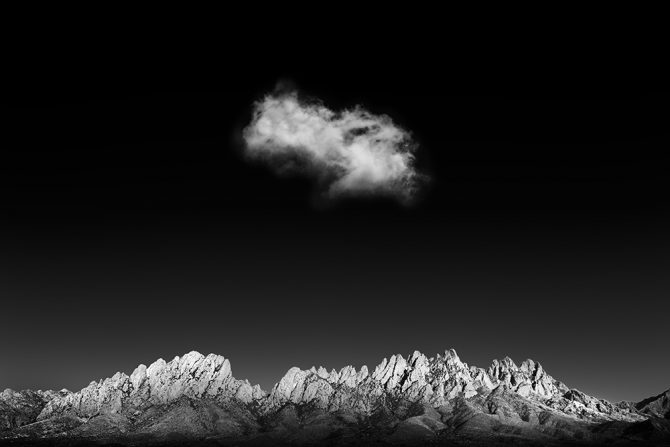
Some of you are familiar with my admittedly odd practice of not studying other photographer’s work. It’s something I’ve been doing for about 2 years now and it’s always been met with curiosity, dismay and sometimes even a little hostility. I mentioned it again in the last blog and it was suggested by my friend and fantastic b&w photographer, Lance Keimig, that this might be a good discussion topic. I agreed and so here we are.
Let me explain why I began this unconventional practice and then I’d love to hear your thoughts on it. However, this might be a very one-sided discussion as I’ve not met many people who agree or appreciate what I’m doing. So if I’m the lone man on this issue, some of you might need to side with me just so we can have a two-way discussion!
To start with I’d like to point out that I’ve never suggested that others should adopt this practice, I’ve just described what I was doing. However I recognize that when one writes publicly, your words can come across as advice.
Several years ago I came to the hard realization that I was not creating with my own vision, but rather I was copying the style and even the images of my revered childhood hero’s. The full impact of this hit home when I was attending a Portfolio Review at the Center in Santa Fe. One of the reviewers said that it appeared I was trying to copy Ansel Adams and Edward Weston’s style. When I responded that I was, because I loved their work, he very bluntly pointed out that Ansel already did Ansel and that no one was going to it better than Ansel. At the time those were very hard words to hear, but over the next year I came to agree with him and it started me on the quest to create with my own vision.
As I analyzed how I was working, I came to the conclusion that when I studied another photographer’s work, I was imprinting their style onto my conscious and subconscious mind. And then when I photographed a scene, I found myself imitating their style rather than seeing it through my own vision. To overcome this tendency I decided to stop looking at the work of other photographer’s, as much as was practically possible.
So for the last two years I’ve tried it; I’ve not read my B&W Magazines, poured over my LensWork or sought out great photography on the web. It’s been hard, and at times I’ve felt like a celibate monk working at a nude beach!
Has it worked? Yes, it has had a positive affect on my art and I feel that my images are increasingly “me” and not just copies of someone else’s work. I’m making progress and when I think of my projects such as The Ghosts of Auschwitz, The Lone Man and the Harbinger series (new image above) I’m pleased with my “direction.”
I don’t expect to continue this practice forever. Once I’ve better developed my vision and have become more disciplined, I’ll return to enjoying black and white photography which has been my first love since the age of 14.
But for me, at this time, and for where I’m at creatively; photographic celibacy is helping!
Cole
P.S. I’ve just had an experience that reinforces my position on this issue. One of my images will be in a new book entitled “Why Photographs Work” by George Barr. Last night we were given a link to review the images chosen and as I looked for mine I came across an image by Brian Kosoff that just stopped me dead in my tracks. It’s entitled “Three Crosses” and it’s the first image on his home page. Do you want to guess where my mind has been all day today as I drove around town? I’ve been looking for telephone poles in patterns so that I can imitate his work!
Bad, bad Cole.
November 25, 2009
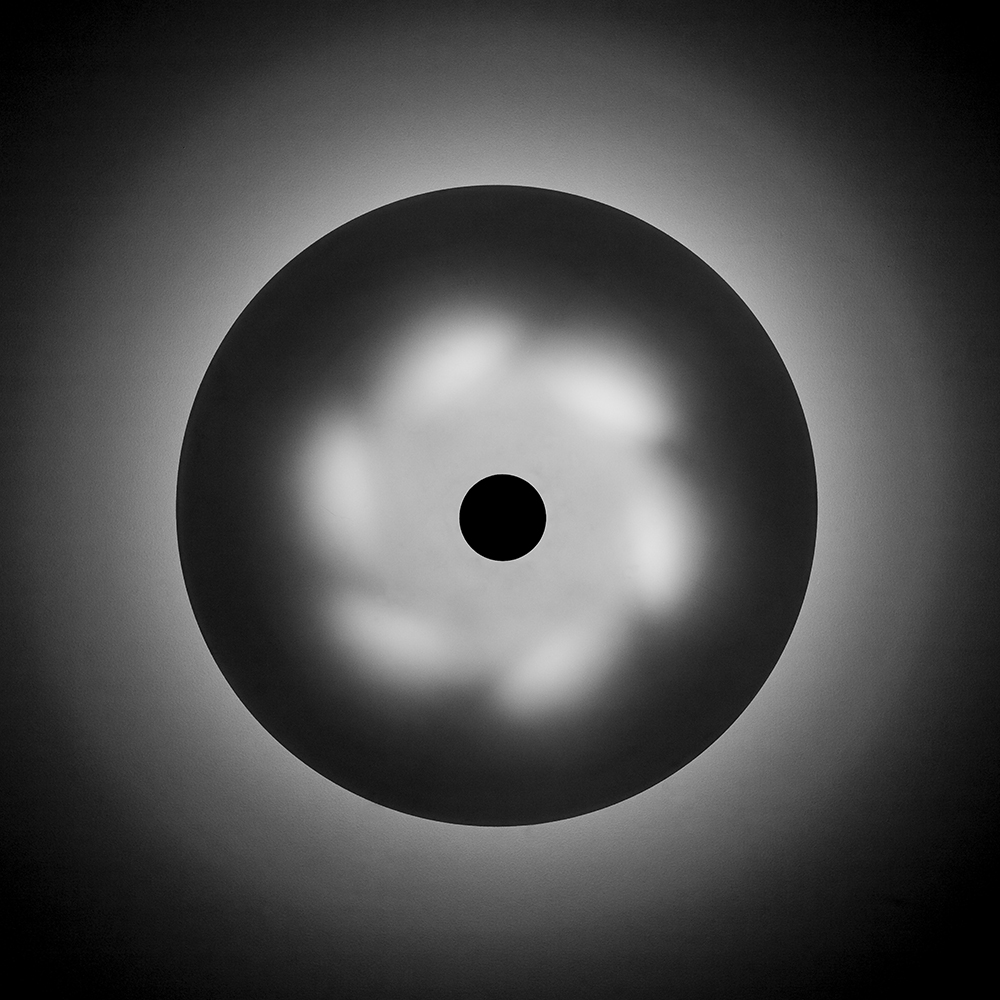
=
Did I lose something?
It was there before, but now it’s gone.
Where did it go?
Will it be back?
Two years ago I stood in the lobby of a hotel in Akron, Ohio and looked up. I saw saw a ceiling lamp, but it was more than that, it appeared to me as abstract shape that inspired me to create my Ceiling Lamps portfolio. The image above was that first lamp.
Now fast forward; three weeks ago I was back in Akron and staying at that very same hotel. Upon checking out I thought about that lamp and looked up. The lamp was still there, but to my surprise I could no longer “see” it, it just looked like an ordinary lamp to me. I thought to myself; I wonder why that lamp inspired me before?
That really kind of scared me, why didn’t it look special any more? What had I lost and could I get it back?

And what if I were walking down the street today and passed “The Angel Gabriel,” would he inspire me to stop?
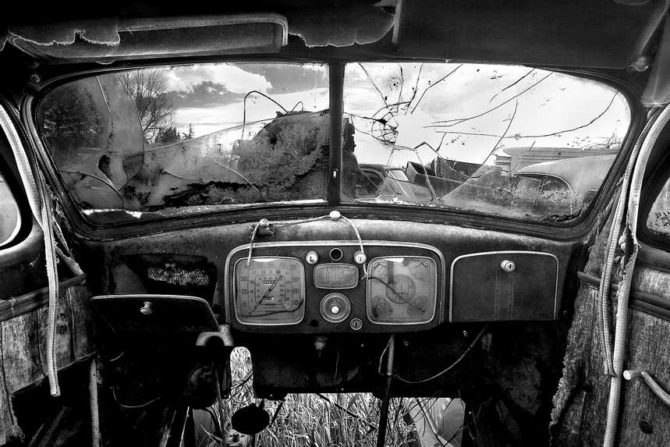
If I were to stumble across that “Old Car Interior” again, would it interest me enough to photograph it?
This experience reinforces two personal beliefs that I have: first to always stop because you may not “see” that inspiration later and second, you can keep going back to the same location over and over and over and still “see” something new. Seeing a great image has more to do with our creative mood, than with the location.
I’ll be back in Akron next year and I’ll be very curious see how I’ll “see” this lamp!
Cole
October 31, 2009


This week I was speaking to a High School photography student about how the images I create, look nothing like the images I shot. When I photograph something, I have a vision of what the final image will look like and I work to bring the captured image in line with that vision. My art does not try to faithfully reproduce what my eyes saw, but rather to recreate what I saw in my mind’s eye or my “vision.”
I characterize my creations as being composed of 50% the shot and 50% this vision. Bringing the shot into line with my vision starts with the image capture, sometimes I’ll underexpose like with “Alphie” above, to set the mood I’m trying to create. Transforming the image continues as I convert it to black & white, frequently using a lot of blue channel to give a contrasty and grainy look.
But most of my vision is introduced when I dodge and burn the image, working in Photoshop like I did in the darkroom, but with infinitely more control. Using a pen and tablet I paint the image to darken it, selectively enhance contrast and to tease out the highlights exactly where I want them. This step is where the “created” image can take a radical departure from the original shot.
Sometimes during processing I might see a new possibility or find a surprise in the image, but generally I know from the moment of capture what the finished image will look like. I think this ability comes from having a personal vision, knowing your capabilities and the limitations of your tools.
Alphie was created about a week ago off the Santa Cruz pier. It was early morning and the sea lions were just becoming active and lazily floating in the water; they seemed to be stretching and waking up. I photographed them as they took on various poses and once I saw this image, I knew that I had what I was looking for.
But as you look at Alphie, remember that you’re really seeing him through the lens of my vision, and not the lens of my camera.
Cole
August 11, 2009
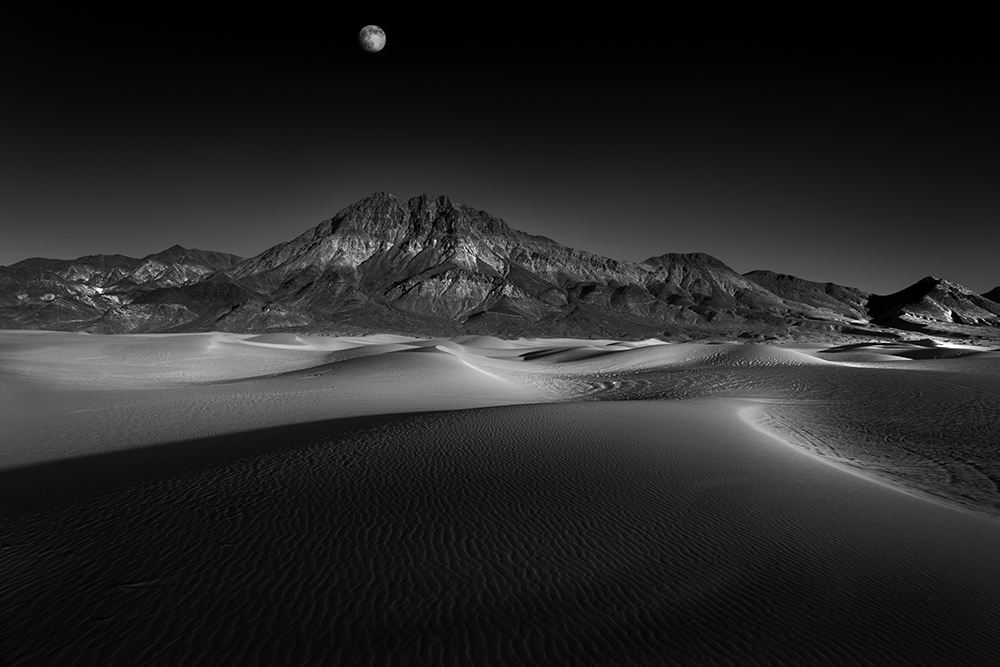
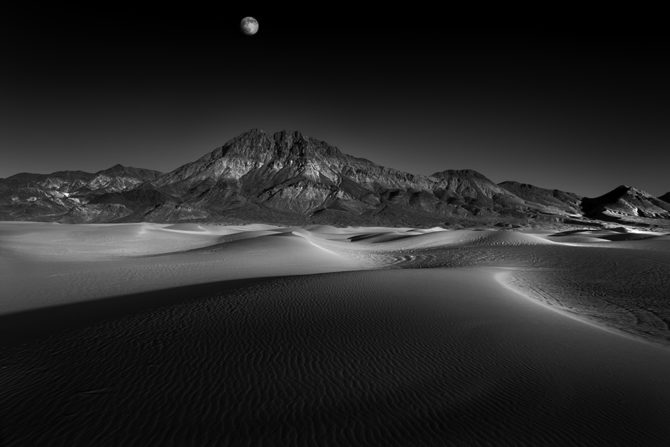
When I was younger, the ultimate compliment someone could give me would be to say: “Your images remind me of Ansel Adams’ work.” He was my childhood hero and I would dream of being “the next Ansel Adams.”
But then one day it hit me; there already was an Ansel Adams and nobody would ever do Ansel better than Ansel. And was that really the extent of my ambitions and the apogee of my dreams, to copy someone else’s work? I suddenly realized that I needed to create work that was uniquely mine.
But how? There isn’t a subject that hasn’t been photographed many times before, so how could I create unique work?
While it is true that most everything has been photographed, it has not been photographed through my eyes. We each have a unique vision buried inside and we must learn how to bring it out and develop it.
I am certainly not there yet, but I recognize what I must do to reach my goal. It is this desire to see things uniquely that has led me to the controversial practice of not looking at other photographer’s work. When I see a tree, I do not want visions of another photographer’s work flashing about in my head so that my creation simply becomes an imitation or extension of their work.
If possible, I would like to see that tree as if for the very first time, like a blind person might see it after an operation gives them sight for the very first time. Of course this is not completely possible, but I do try to keep my mind clear of other images as much as possible.
When I photographed people on the street of Ukraine, that certainly was not a unique idea, but I hope that having people close their eyes was a unique approach. Photographing ceiling lamps was not an original idea either, but I hope the viewpoint was.
I believe that we each have the capacity to be original, that we each have a unique vision that can be developed. For some, like myself, it was buried deep and I didn’t even know that it was there. Others are lucky to have this talent lying near the surface.
Cole
